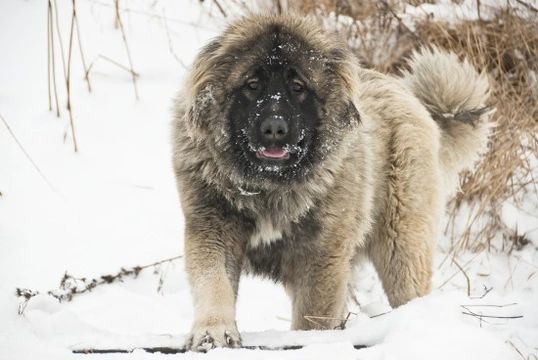
Ten uncommon dog breeds you might not have heard of
It is estimated that there are almost 500 different dog breeds in the world, and it can be difficult to get a definitive figure as not all breeds are recognised across the board in every country! With the sheer number of different breeds and types of dogs around, even the most conscientious canine enthusiast is unlikely to be able to name all 500 or so of them without struggling! Within the UK, most of us will go through our entire lives without seeing more than 100 to 150 different breeds of dog over all, which leaves around 350 dog breeds that you might never even get the chance to see!
Here are ten dog breeds from across the world that are very unusual within the UK... Have you seen any of them before?
Caucasian Shepherd Dog
The Caucasian Shepherd Dog is a canine giant that when fully grown, could easily be mistaken for a bear! These dogs hail from the Caucasus mountains, and are popular in Georgia, Armenia and the wider Caucasus region. They are dogs of the Molosser grouping, and are prized for their ability as guard dogs, showing extreme loyalty to their families and the livestock that they protect, but often being distrustful of strangers.
Estrela Mountain Dog
The Estrela Mountain Dog originates in the Estrela mountains of Portugal, where they have been used for centuries as herd guarding dogs. Large, athletic, hairy and heavy, the Estrela Mountain Dog is also known for being both fearless and calm, making them hugely popular as working companions and family and farm pets. The Estrela Mountain Dog is a recognised breed within America, but is otherwise uncommon outside of Portugal.
Hovawart
The German “Hovie” hails from the Black Forest region of Germany, and their name literally means “estate guarding dog”. Hovawart dogs have a known history going back at least as far as medieval times, and are medium height dogs with a relatively stocky, muscular build and superior guarding abilities. They are often reserved or suspicious of strangers, but bond very strongly with their families.
Mudi
The Mudi is a herding dog from Hungary, which is today relatively rare, even in its home country. They are still used extensively for working roles, but can also be seen competing in events such as dog agility with their owners. They are wiry, muscular and trim, medium height, and have a conformation that shares some physical similarities to the Border Collie. Like the Border Collie, they are extremely lively dogs with lots of stamina that require plenty of exercise!
Russian Toy Terrier
The Russian Toy Terrier is a cute, attractive little dog that nearly became extinct in the 1920’s, due to the dog’s association with the Russian aristocracy and their subsequent fall from grace. The Russian Toy is one of the world’s smallest dog breeds, which weighs between 3lb and 6lb, or less than the average cat!
Slovensky Cuvac
The Slovensky Cuvac is a big mountain dog from Slovakia, which at a glance might be mistaken for a large, hefty Golden Retriever! The Cuvac is prized for its abilities as a herding dog, livestock guarding dog and companion, and has been documented in its home country as far back as the 17th century. The breed had almost died out entirely by the 1950’s as the dog’s traditional working roles were erased, but thanks to efforts to maintain the breed lines, the Slovensky Cuvac can still be seen in reasonable numbers in their home country today.
Pumi
The Pumi is a terrier-type dog, used as a sheep dog in its native country of Hungary. Related to the Mudi, the Puli is still popular as a general purpose farm dog in Hungary, and has also been exported widely to other countries including Italy, America and the Nordic countries. They are small to medium sized with a closely curled, low shedding coat and appealing comical expression!
Kooiker Hound/Kooikerhondje
The Kooiker Hound is a Dutch spaniel-type dog, which was traditionally used for duck tolling and hunting. They are of a medium height and build, with bundles of energy and a high degree of intelligence. While the breed was until recently relatively unknown outside of the Netherlands, the dogs are rapidly growing in popularity in other countries, including America and Canada.
Catalburun
The Catalburun hails from Turkey, and is very rarely seen outside of their home country. The breed is of the Pointer-type, and they are sometimes referred to as “Split Nose Pointers,” thanks to one unique physical trait that the breed possesses: their very distinctive noses are split down the middle, meaning that you would be sure to recognise a Catalburun dog if you spotted one in the street!
Appenzeller Sennunhund
The Appenzeller Sennunhund comes from the alpine region of Switzerland, and is another large, heavy mountain dog. While the breed was traditionally used as a general purpose farm dog, guard dog and herding dog, today they are most commonly seen as pets and companions. They are lively, loyal and protective, but can be a handful!



